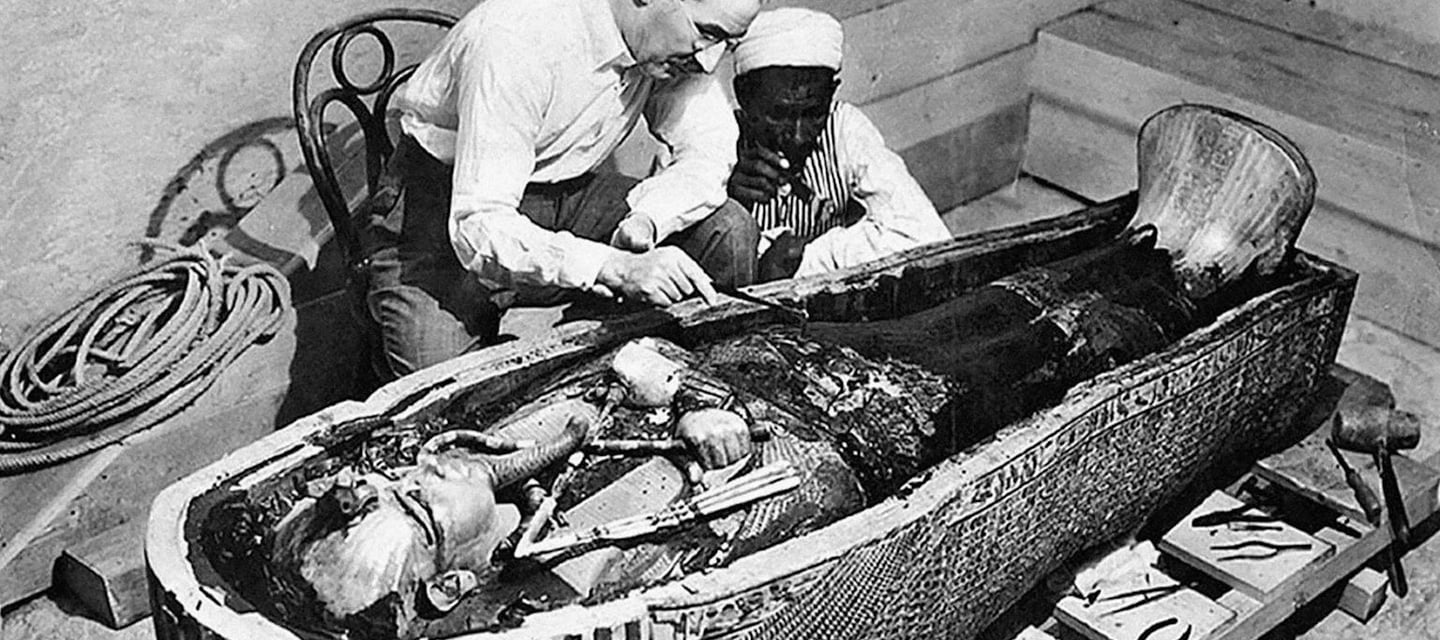Astrology & Curses


The Curse Of Tutankhamun
By: YasM | 23/06/2025
The Curse of Tutankhamun
In 1922, British archaeologist Howard Carter made one of the greatest archaeological discoveries of all time: the tomb of Tutankhamun, the boy-king of ancient Egypt. Hidden in the Valley of the Kings for more than three thousand years, the tomb was remarkably intact, filled with dazzling treasures. Yet, alongside the wonder and glory of this discovery, a darker legend was born — the so-called “Curse of Tutankhamun,” believed by many to have struck down those who dared to disturb the pharaoh’s eternal rest.
The idea of the curse gained traction after the sudden death of Lord Carnarvon, the wealthy aristocrat who had financed the excavation. Only months after entering the tomb, Carnarvon suffered an infected mosquito bite and died in Cairo in April 1923. Newspapers seized upon this coincidence, declaring his fate a direct punishment from the ancient king. Reporters also exaggerated or misreported other deaths and illnesses of those connected to the tomb, creating a sense that a supernatural force was exacting vengeance. Spiritualist writers such as Arthur Conan Doyle lent further credibility to the story, claiming that “elemental spirits” had been unleashed. Soon, the myth of a deadly curse spread around the globe, captivating the public imagination.
When examined closely, however, the curse appears to be more a product of media sensationalism than of historical fact. Howard Carter himself lived until 1939, seventeen years after the tomb’s opening, and many others who worked inside survived long lives. There was no inscription of a curse inside Tutankhamun’s tomb, despite repeated claims in newspapers. What remained were a handful of deaths, tragic but statistically unremarkable, woven into a dramatic tale that sold newspapers and fueled mystery.
Science, too, has offered rational explanations for the supposed curse. Some researchers suggested that ancient tombs may harbor dangerous fungi or bacteria, such as Aspergillus, capable of causing illness in those with weakened immune systems. Others point out that in the 1920s, medical care was limited, and infections were often fatal — as in Carnarvon’s case. Still, there is no solid evidence that any microorganism from Tutankhamun’s tomb caused a single death. What seems most plausible is a mixture of coincidence, poor health, and the human tendency to find patterns where none exist.
The persistence of the curse is best explained by psychology and culture. Stories of curses resonate deeply because they touch on universal themes: the fear of death, respect for the dead, and the danger of breaking taboos. They offer a moral lesson — that greed or intrusion into sacred spaces carries consequences. Moreover, such narratives are compelling and memorable, far more so than mundane accounts of infection or chance. Thus, the curse of Tutankhamun has endured, inspiring countless books, films, and tourist tales, even when historians and scientists dismiss it.
In conclusion, the “Curse of Tutankhamun” stands as one of the most famous legends of the modern era. While no real evidence supports the existence of a supernatural curse, the story reveals the power of myth-making, the influence of media, and the deep human fascination with the unknown. It is not just a tale of ancient Egypt, but also a mirror reflecting our own need for mystery and meaning. In this sense, the curse is real — not in the realm of magic, but in the imagination of humanity.
Coming Soon
We're on a mission .........................

Discover our full library of The Theos e-magazines and articles — all completely free to read.
We are a crowdfunded publication, dedicated to sharing knowledge, reflection, and theology with readers around the world.
Your support and donations help us continue offering open, accessible content for everyone, everywhere.
Join us in keeping wisdom free.
@ the theos since 2023 © 2023. All rights reserved.